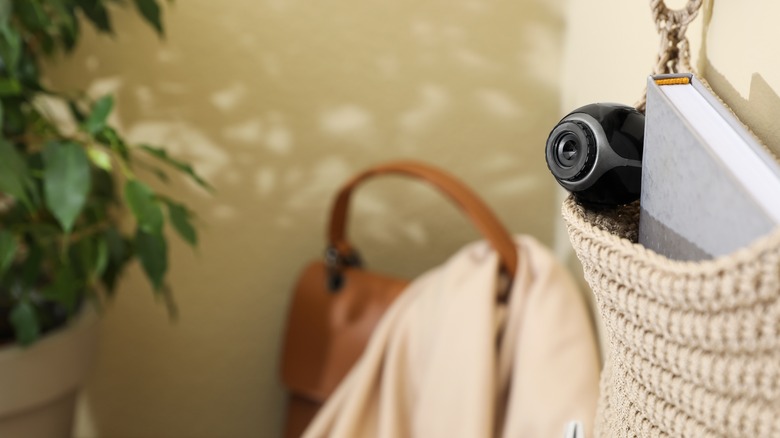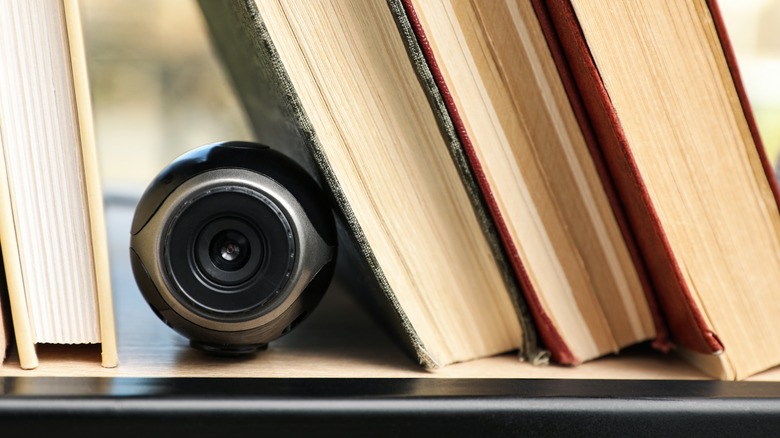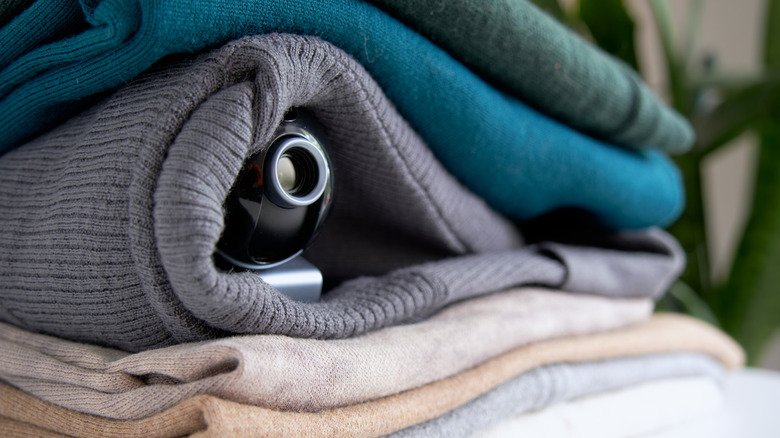How To Scan For Hidden Cameras In An Airbnb
Airbnb has become quite the phenomenon. In April 2023, Statista reported that the company's market capitulation around the world stood at $73.43 billion in 2023, and hit a remarkable $105.78 billion in 2021. The whole "stay in a stranger's house" thing may have seemed a novelty at first, but there's absolutely a market for it, and a burgeoning one at that.
However, that very same factor does cause concern among some guests. In hotels and Airbnbs alike, the threat of hidden cameras is one that can frightened travelers. In November of 2016, Inside Edition on YouTube shared the tale of a woman named Angela Wallace and her spouse, who were staying with their daughter at The Knights Inn and Suites in Viriginia Beach. They discovered a camera in the bathroom, to ultimately be told by the authorities (per the show) that "there was no information recovered from the device that could lead to criminal charges." travelers' first line of defense, then, is to thoroughly check Airbnbs and hotel rooms for any recording devices.
Of course, an old-fashioned search can be effective in finding less subtly hidden devices and standard-issue webcams. Perpetrators, unfortunately, have become more adept at hiding cameras more carefully, which means renters need to be more vigilant in turn. Here's how to scan for any sneaky cameras that may be hidden away.
Finding things with Fing
There is an app called Fing available for both mobile and desktop devices. Its primary purpose is an incredibly convenient one for those on an unfamiliar WiFi network. It will detect every device connected to it, and, in the process, reveal whether you're only surrounded by routers and iPhones or if something rather more sinister, like a camera, is hidden away too.
Here's how to use the app (Fing):
-
Download Fing from your device's associated app store.
-
From the Overview tab (which will show you the network you're currently connected to), select Scan current network.
-
Review the number of devices in range of the network, whether they're online, and how secure the network is.
-
Select See Devices at the bottom of the page.
This screen lists every device in range and provides a handy icon that shows at a glance what it is (a television, router, and so on). Users can also see when it was last in use. If a webcam is present, you'll know it. Fing is valuable because webcams, which are cheap, often discreet, and, as the name suggests, web-reliant, are hard to miss using the app. With its easy-to-use nature, too, it can be used wherever you go and doesn't require any specialist equipment.
Other ways of finding hidden cameras
For those who have need of them, other dedicated devices are available for detecting cameras.
Camera lens finders are small portable viewfinder-equipped devices, which allow users to easily spot the telltale reflection of a camera lens, according to SpyCentre Security on YouTube. A flashlight can be used as a rudimentary detector, working in a similar fashion. Radio frequency detectors cannot "see" cameras in the same way, but will enable users to pinpoint a signal if it's in close proximity. SpyCentre likens the function to that of a metal detector, but notes that more sophisticated models may be needed to distinguish what a specific signal is and have a wider range to detect it in the first place.
There is, in short, an approach to detecting hidden cameras to suit a wide range of needs and budgets. Travelers shouldn't be dissuaded from taking trips because of such concerns, but it's absolutely reasonable to want to take steps to counteract them too. There isn't always a woodpecker available to destroy a hidden camera, after all.


